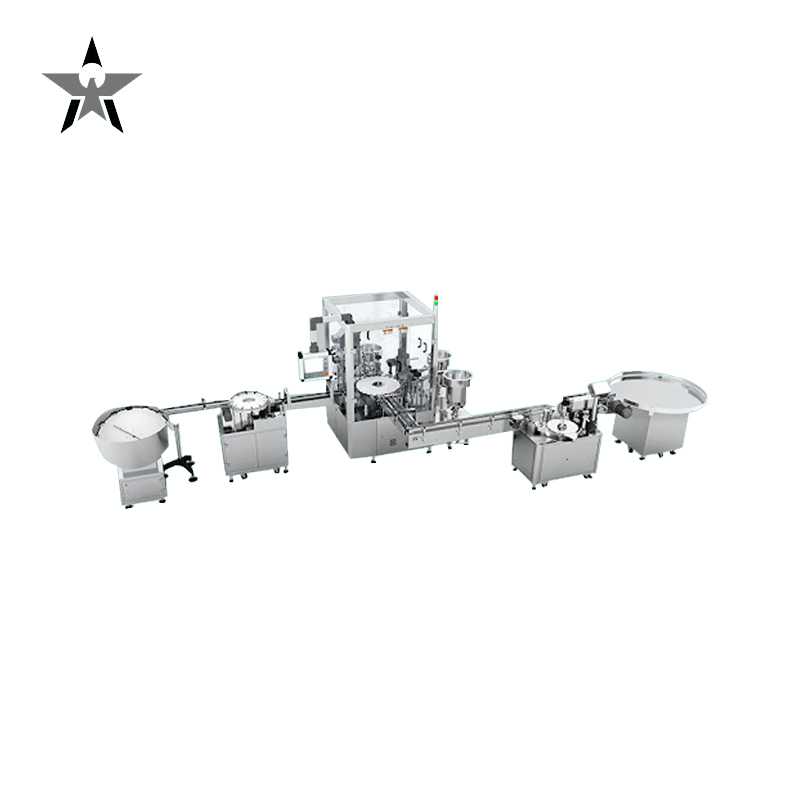Versatile Packaging Capabilities
Handles a variety of food products, including dry goods (snacks, grains, powders), liquids (juices, sauces), semi-liquids (yogurt, pastes), and frozen foods.
Supports multiple packaging formats, including:
Pouches (stand-up, zipper, or flat pouches)
Bottles, jars, and cans
Trays, cartons, or shrink-wrapped packs
High-Speed Operation
Advanced automation enables rapid and continuous production, minimizing downtime.
Multi-head filling and sealing systems for high-output production.
Precise Filling Systems
Specialized filling systems ensure accuracy and minimize waste:
Volumetric Fillers: For granules, powders, and dry foods.
Piston Fillers: For thick pastes, sauces, or semi-liquids.
Pump Fillers: For liquid products like water, oils, or juices.
Auger Fillers: For powders such as flour, coffee, or protein powder.
Automated Sealing and Labeling
Heat sealing, vacuum sealing, or resealable options for maintaining freshness.
High-speed labeling systems for applying brand labels, nutritional information, and barcodes.
Inline Quality Control
Vision inspection systems for detecting packaging defects, proper filling levels, and correct labeling.
Metal detection and weight verification systems ensure food safety and regulatory compliance.
Flexible Control System
Equipped with programmable logic controllers (PLCs) and user-friendly human-machine interfaces (HMIs).
Real-time monitoring and data collection to ensure efficient operation and quick troubleshooting.
Hygienic and Food-Safe Design
Built with stainless steel and food-grade materials for durability and easy cleaning.
Designed to meet HACCP, ISO, and FDA food safety standards.
End-of-Line Packaging
Secondary packaging systems for grouping products into cartons, shrink-wrapping, or palletizing for transport.
Options for automated case packing and palletizing to streamline logistics.
Process Workflow
Product Feeding
Automated feeding systems handle raw or pre-prepared food products, ensuring a steady flow into the production line.
Filling
Food is dispensed into the selected packaging format using precise filling equipment suitable for the product type.
Sealing
Packaging is sealed to maintain product freshness, prevent contamination, and extend shelf life. Sealing options include:
Heat sealing
Vacuum sealing
Zipper resealing
Labeling and Printing
Labels with product branding, nutritional information, or barcodes are applied.
Inkjet or laser printing systems add production dates, expiration dates, or batch codes.
Inspection and Quality Control
Inline systems ensure product weight consistency, proper sealing, and package integrity.
Additional options include x-ray or metal detectors for food safety.
Secondary Packaging
Individual packages are grouped, boxed, or shrink-wrapped.
Automated carton forming, filling, and sealing systems streamline the process.
Palletizing
Finished products are stacked and prepared for transport with automated palletizing systems.
Applications
This production line can handle various food products, such as:
Dry Foods: Snacks, cereals, grains, nuts, coffee, spices, and powdered foods.
Liquid Foods: Beverages, sauces, oils, syrups, and soups.
Semi-Liquid Foods: Yogurt, jams, peanut butter, or dips.
Frozen and Ready-to-Eat Foods: Frozen vegetables, meats, and ready meals.
Baked Goods: Bread, cookies, and pastries.
Benefits
Increased Efficiency: High-speed operation reduces production time and increases throughput.
Consistent Quality: Ensures precision in filling, sealing, and labeling for uniform product quality.
Food Safety: Designed to comply with international food safety standards, reducing contamination risks.
Cost Savings: Minimizes material waste and reduces labor costs through automation.
Scalability: Modular design allows for easy expansion or adaptation to new product types or packaging formats.
Traceability: Serialization and coding systems ensure product traceability for compliance and consumer trust.
Customization Options
Custom filling systems for unique food products.
Packaging formats tailored to specific product and market requirements.
Integration with existing production systems or supply chain solutions.
Optional features such as nitrogen flushing for preserving food freshness.
Conclusion
The fully automated food packing production line offers a reliable and efficient solution for food manufacturers. It ensures high production speeds, superior product quality, and compliance with food safety regulations, making it an essential investment for companies seeking to scale operations and remain competitive in the food industry.




